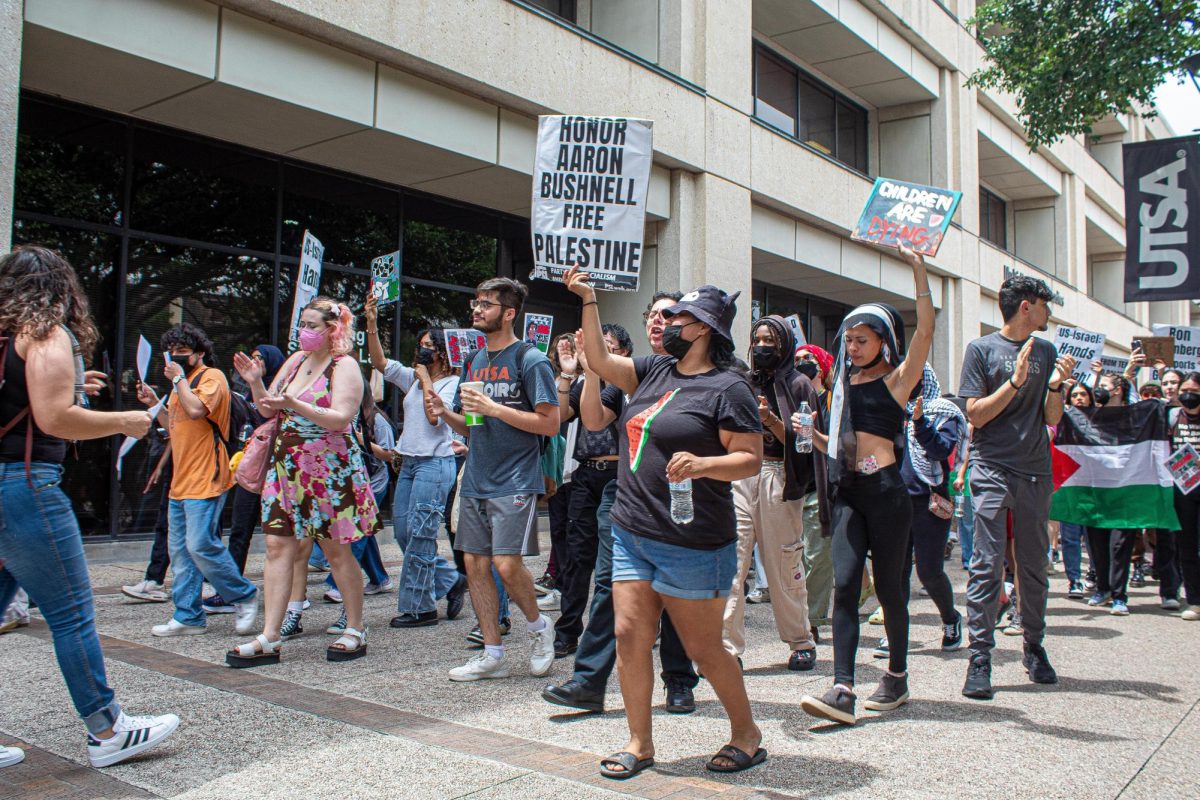

Caroline Traylor, The Paisano
B-cycle’s bike-sharing network at UTSA has fallen short of expectations, despite support from students, administrators and the City of San Antonio.
UTSA students, according to the San Antonio Current, checked out a total of only 65 bikes during the first four months of the program.
The B-cycle stations — one next to Alvarez Hall and the other adjacent to the Applied Engineering and Technology Building — provide students with opportunities to borrow a bicycle for up to half an hour at no charge if they purchase a discounted $25 pass. The passes are good for a full semester.
“We were given this gift so we took it,” said senior anthropology major Cole Whitmore about the bike sharing. “And then when we put in student input they didn’t take it.”
The stations are part of a pilot program to gauge student interest in a bike sharing system. Many had hoped that the two stations on campus would be the first of a satellite system that would grow and eventually connect to other attractions around UTSA, such as neighboring apartment complexes and the Leon Creek Greenbelt.
B-cycle operates in more than two dozen cities around the country; San Antonio’s downtown network of over 75 stations and growing is the company’s largest and most-used system. San Antonio’s City Council recently approved over $120,000 in funding to keep B-cycle operating in San Antonio.
The two stations at UTSA did not cost the university a cent to build. Rather, District 8 City Councilman Ron Nirenberg, who represents the university at City Hall, secured funding for the project.
“The addition of B-cycle at the Main Campus is another step in our collective efforts to make UTSA a more accessible, liable community,” Nirenberg told UTSA Today in January when the announcement was first made. “By doing more cycling than driving, I hope students will take advantage of the opportunity to save money, burn some calories and enjoy the beautiful UTSA campus.”
Albert Carrisalez, director of external affairs for UTSA, has asked students for their input to determine any potential locations for a future of expansion of UTSA’s B-cycle system. However, many students who responded believe that the pilot stations’ locations were impractical or ineffective.
“I feel like they’d probably get more use by the far parking lots,” said a junior geology major who wished to remain anonymous. “The only real advantage to having them on campus is if someone forgot something and needed to go to one of the nearby apartments,” the student said.
The overwhelming majority of students interviewed, however, were not even aware of B-cycle’s presence on campus.
“I knew there was a bike share downtown,” said undeclared sophomore Isaiah Slaughter, “but didn’t even know there was a program at main campus.”
“I’ve seen them on campus and around the city, but I don’t know a lot of people who use it,” said junior sociology major Samantha Lopez.
The two stations were merely a pilot program to gauge interest in a bike sharing system on campus. Ridership at the first two stations would have to show promise before any expansion of the system would be considered.
The low ridership numbers are not the only concern for a B-cycle expansion at UTSA, however.
“The thing is, we’d have to find a lot of the financial support,” said Gus Sullivan, B-cycle San Antonio’s former business development director. The grants B-cycle used to build its downtown network would not apply for a satellite system at UTSA’s main campus, Sullivan explained, meaning that the money would likely have to come from private investors.
Additionally, the two stations at UTSA are not necessarily permanent and may not be on campus much longer. According to Sullivan, the stations needed to be moved from downtown to accommodate construction around the San Antonio Arsenal. Because far fewer students than expected partook in B-cycles pilot program at UTSA, the stations may be returned to their original home downtown.
“I think the bottom line is that is was offered ahead of its time,” Whitmore said. “With a little time and recognition, it could be a great program. Students just need to know about it.”











